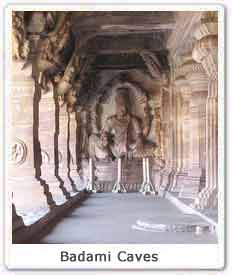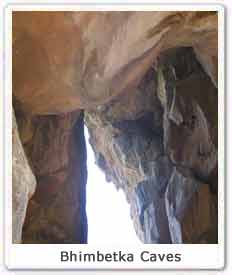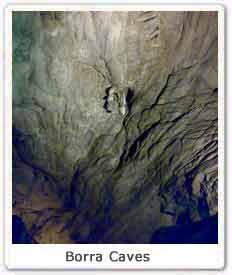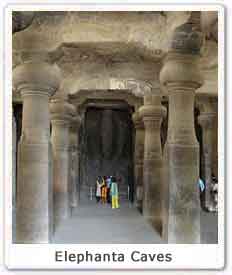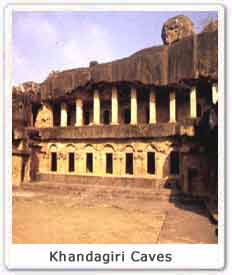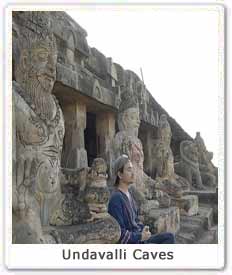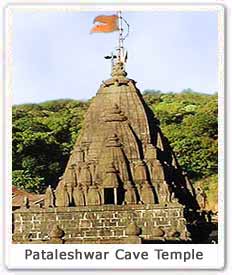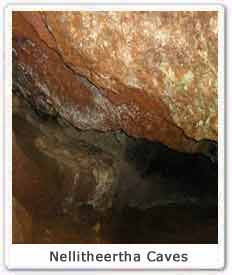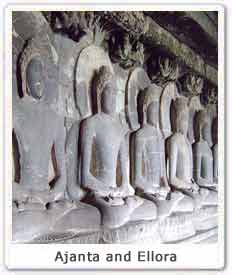 Location :
Location : The rock cut caves of Ajanta and Ellora lies in the city of Aurangabad in Maharashtra in India. The caves of Ajanta and Ellora are one of the most amazing archaeological sites in India. These are not the natural sites but the man made caves, which have been built by cutting the huge granite hillside. According to the historical evidences caves were built by the Hindu, Jain and Buddhist monks, who stayed and mediated here for the longer period of time. Ellora caves start from the point from where the Ajanta caves ends. Ajanta caves are older than the Ellora caves. Each cave at Ajanta and Ellora has the different story to tell. Tourists can make a visit to this place at any time during the year.
History :
The caves of Ajanta and Ellora were somehow forgotten, but were rediscovered by the group of British officers in 1845 when they were haunting in the Deccan Plateau. While haunting one of the official discovered the horseshoe rock from the distance. Their curiosity aroused to explore the place. Soon they discovered several caves behind the bushes and informed to the government. The Archaeologist began excavating the caves. The caves also finds mention in the writings of the Hiuen Tsang, the Chinese pilgrim, who visited India between the 629 and 645 AD. The caves provides the finest example from the Chalukya, Kalachuri, and Rashtrakuta periods. These caves are located near the ancient trade route between Ujjain in Madhya Pradesh and the west coast. The caves were roughly constructed somewhere between the 200 BC and 650. It is also believed that these caves are the handiwork of the priests and the Buddhist, Jain and Hindu monks who frequently visited the place.
Architectural Significance :
The rock cut caves of the Ajanta and Ellora are the architectural marvel that also finds place in World Heritage list. Both the caves of Ajanta and Ellora are cut out from the volcanic lava of the Deccan plateau. There are total of 29 caves in Ajanta. The caves houses some of the wonderful well preserved paintings, which include two great Boddhisattbvas, Padmapani, and Avalokiteshvara. The most interesting among them are the Jataka tales that illustrate the diverse stories related to the previous incarnations of the Buddha. Some of the caves in Ajanta boosts of some of the most divine sculptures. The flying apsara and the image of Buddha in the cave number 17 is simply amazing.
There are total of 34 caves in Ellora, which houses the elaborate facades and exquisitely adorned interiors. The 12 caves which lies in the southward direction are Buddhist caves, 17 in the middle are the Hindu caves while 5 in the north direction are the Jain caves. The sculpture in the Buddhist caves beautifully presents the nobility and grace of Lord Buddha. Tourists are recommended to make a visit to the Kailasa temple in the cave 16. It is dedicated to Lord Shiva and is the world's largest monolith with the gateway, pavilion, sanctum, assembly hall and tower all cut out of one single rock. Ellora caves also contains the image of Vishwakarma, who was the patron saint of Hindu craftsmen.
Tourists activities :
Tourists can spend time by indulging themselves in the photography. As the Ajanta caves faces eastwards so the best time to take pictures is the morning time. The caves of Ellora faces westward so its good to capture the pictures in the noon time. Apart from photography you can take the leisure time venturing in the clipped lawns. Tourists can also make a visit to the Siddhadtha Gardens and Bibi Ka Maqbara - the Mausoleum of Akbar's Queen.
Ellora Festival :
Tourists can also be a part of the Ellora festival, held in the month of March every year. You can enjoy the classical programmes performed by the prominent artists. The festival is organized by the Maharashtra Tourism Development Corporation.
